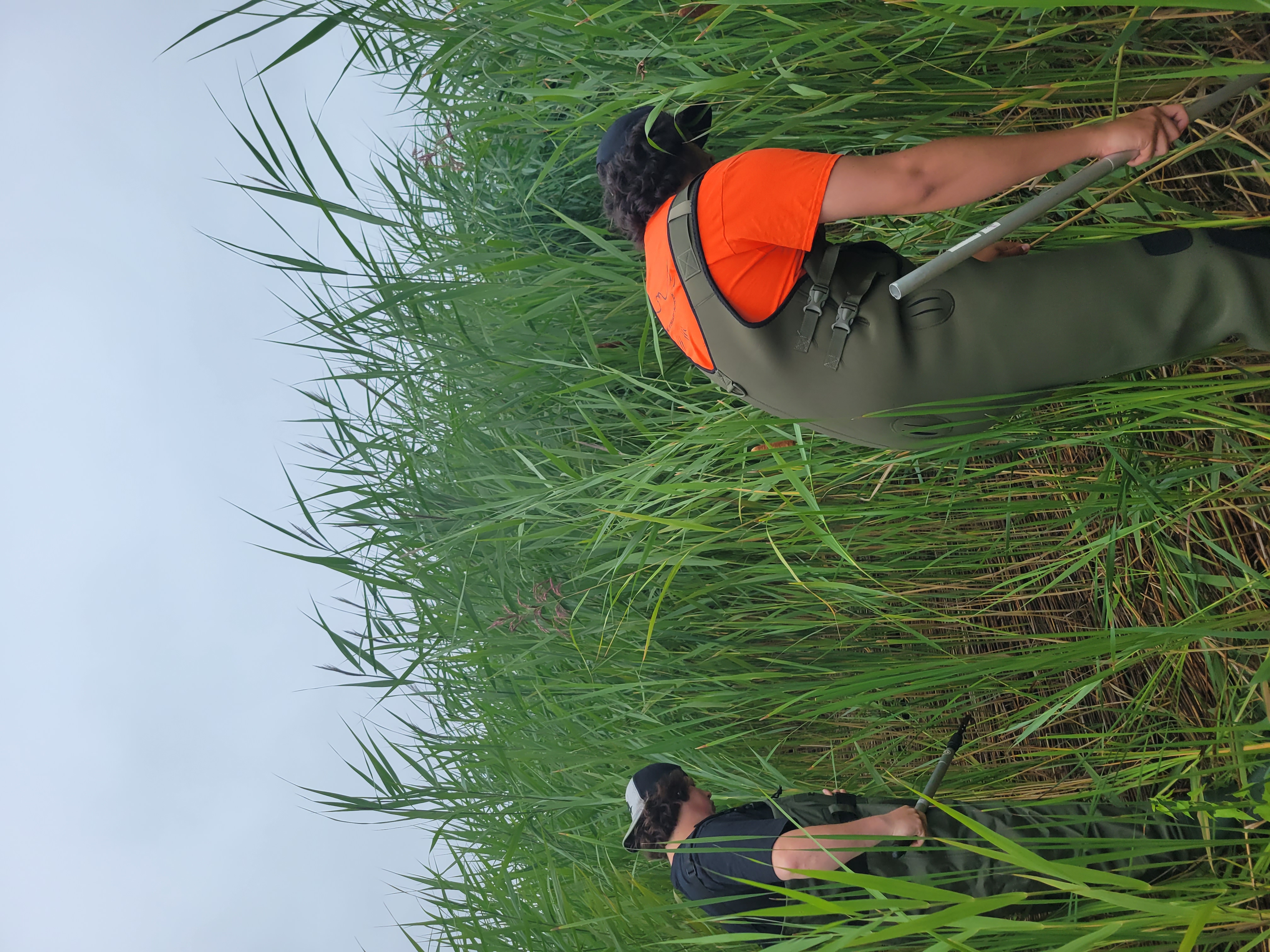Since the establishment of NFN’s Environment Department, much work has gone into the mapping, documenting, and eradication of invasive species within Nipissing First Nation Administrative Boundaries (the area to which NFN has the ability to establish laws) and traditional territory areas. UAV exercises by the department not only proved that mapping invasive phragmites stands (Phragmites australis australis) were possible, but that it could be conducted for large swaths of NFNs shorelines and land bases, without the need of technical sensors or payloads for the UAV. For instance, mapping of shorelines in the fall, demonstrated that invasive phragmites “stuck out” of the native foliage, whereby the invasive plant remained green while the native vegetation had already entered dormancy, and looked dead or brown. This information was not only vital in mapping and identifying the size of current stands, but also in the monitoring of current invasive phragmites spread within the NFN Nation and shorelines. Successful grants awarded to the department, yearly since 2021, have paved the way for the department to build up an arsenal of eradication equipment including cane cutters, mechanical gas-powered trimmers (for cutting and drowning phragmites) and enhanced access to analytical software required for mapping and analyzing remote sensing data conducted by the department.
Continued partnerships, like those with Georgian Bay Forever (https://www.georgianbayforever.org/) and the Invasive Species Center (https://www.invasivespeciescentre.ca/) continue to assist the department in staying up to date in the latest eradication methodologies and building a strong repour with stewardship organizations with common interests. Georgian Bay Forever (GBF) as been assisting with training NFN summer students in the life history of common invasive species and hands on removal experience since 2022. On July 21, 2023, a continuation of this hands-on training from GBF occurred, with the NFN Environment Department providing demonstrations on mapping stands with the department’s UAV. The Department in conjunction with summer students and GBF also performed some eradication initiatives throughout the summer of 2023, primarily focusing on invasive phragmites from Dokis Point. 2023 marks the first year of a complete eradication of an invasive colony of phragmites within Land Base of Nipissing First Nation, whereby approximate 1518 m2 was treated with mechanical removal, “cut and drown” technique. Department staff and summer students revisited the site as part of the 2024 field season to ensure the permanent removal of invasive phragmites and prevent its reestablishment.
To support this effort, the department has initiated a large wild rice gathering project, collecting wild rice from Cache Bay and planting it in areas where phragmites has been eradicated. This remediation effort aims to enhance the resilience of the Nipissing First Nation shoreline by promoting biodiversity, providing food for migratory birds, acting as a nursery for juvenile fish, preventing shoreline erosion, and improving water quality. The wild rice will replace the ecologically harmful, and non-native phragmites species.
The Environment Department is currently in the process of being awarded two additional funding opportunities. The grants will be used to continue the work already completed on invasive phragmites, in addition to enabling the department to combat other invasive species such as Japanese Knotweed, which has also been established within NFN’s land base.
In the summer of 2024 through the remediation efforts, the Environment Department was able to establish that the mnomin (wild rice) that had been planted to replace the invasive phragmites in a stand in Garden Village, had in fact succeeded in producing viable mnomin. See The Narwhal article here, https://thenarwhal.ca/nipissing-first-nation-wild-rice/ (simply copy paste the link in your search browser).
The Environment Department in collaboration with the Natural Resources Department are currently working on workshops and information sessions for community members to learn more about invasive species already found in Nipissing. Additional invasive species that are found in Ontario and Canada but not yet identified on Nipissing First Nation Territory will also be included!
If anyone has any questions regarding invasive species, do not hesitate to reach out to the Lands and Natural Resources Technician.


